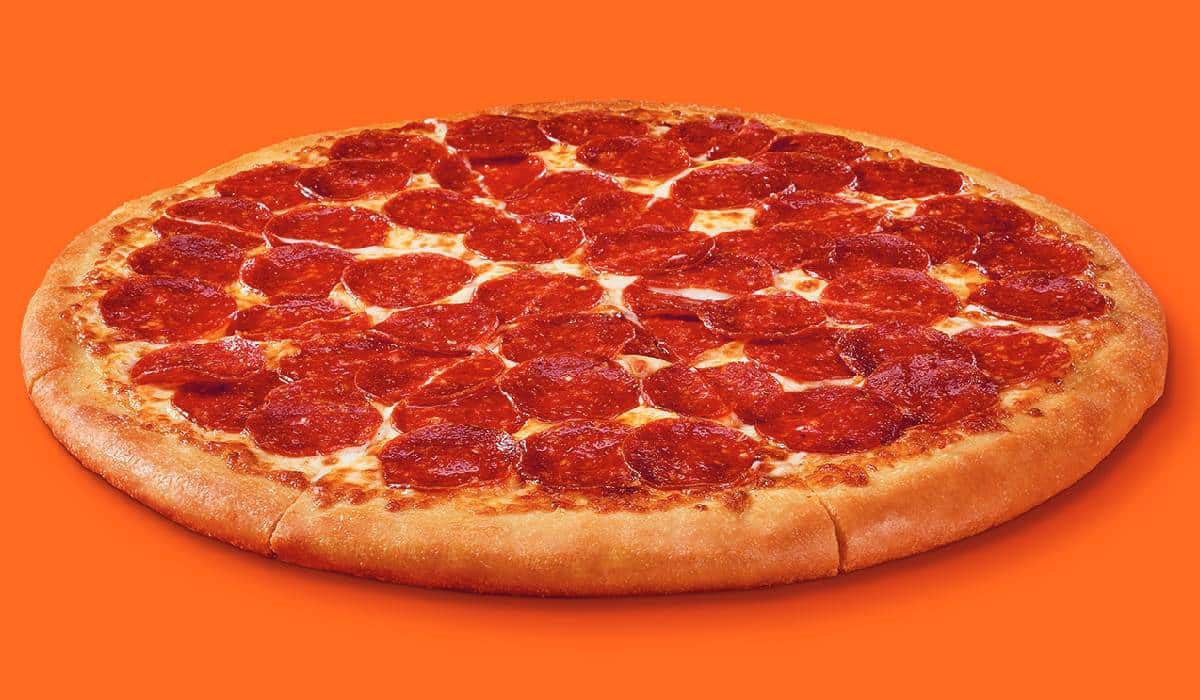Even though Little Caesars has a presence in all 50 states, Craig Sherwood, vice president of U.S. development, says there’s plenty of whitespace ripe for expansion—to the tune of more than 1,000 locations in the next five to 10 years.
The chain ended 2021 with 4,181 restaurants, after losing a net of 81 stores in three years. Still, Little Caesars is the third-largest pizza chain in the U.S. in terms of unit count—following Domino’s and Pizza Hut. The brand is working through a multi-year franchising push to ensure it stays that way, and it now has the requisite leadership team to do it. In addition to Sherwood, the company hired Marc DaSilva as vice president of international development, Basil Kazepis as vice president of real estate and construction, and Jeremy Vitaro as chief development officer.
Last year, Little Caesars signed a multi-unit deal with CMG Companies, a large operator that also franchises KFC, Taco Bell, Marriott, Hilton, and other concepts. Named Franchisee of the Year by the International Franchise Association in 2021, the group acquired a number of Little Caesars restaurants in Kansas City; Baltimore; and Syracuse, New York; and committed to opening 19 new stores in the next five years. Individual franchisees have signed on for more, as well, including Vicki Dunn Marshall, a 24-unit operator in West Virginia, Kentucky, and Ohio. She plans to expand her base with 10 more locations in the greater Charlotte area.
In 2022, Little Caesars believes it can double the number of franchise commitments it achieved during the previous year. Thus far, Starbeds Legacy, an owner of Dunkin’, Popeyes, and Checkers stores, aims to debut 10 in Tampa; Gregg Niro, a 45-unit Dunkin’ franchisee, plans to roll out eight in Norfolk, Virginia and the Outer Banks in North Carolina; and James Allen, leader of a Las Vegas-based development firm, is looking to open at least six locations in Vermont.
Internationally, the brand recently expanded its footprint in Russia, Colombia, Spain, and Barbados, and it’s looking for more in Brazil, France, Malaysia, Philippines, and United Arab Emirates.
“We’re very bullish on the growth here in the United States,” Sherwood says. “We’ve got a group in the U.K. closing deals, and we’re expanding our presence in Spain. There’s a lot of good things going on, not just here in the U.S., but around the world as well.”
READ MORE: How Little Caesars Plans to Bolster Market Share
Domestically, the brand is focused on markets like New England, Hawaii, and New York, with the latter being a potential site for flagship units. Multi-unit and single-unit opportunities are available depending on the size of the operator; the most important part, Sherwood says, is that partners fit into the company’s culture and are passionate about foodservice and hospitality. One of its biggest priorities is signing military veterans and first responders, which it has done so in Baltimore, Oklahoma, Orlando, Phoenix, and other cities across the country. The objective dates back to Little Caesars’ founder, who served in the Korean War.
Little Caesars is part of a pizza category that experienced major tailwinds during the pandemic as customers opted for comfort food and off-premises outlets. For example, In the first four months of 2021, U.S.-based pizza concepts saw a 27 percent increase in foot traffic, according to Zenreach. That includes a 41 percent jump in New York, a 42 percent hike in Illinois, and a 77 percent rise in California.
Little Caesars signed an agreement with DoorDash right before COVD hit the U.S. Now, digital and delivery mixes roughly 33 percent.
“It’s a profitable model,” Sherwood says. “For large, multi-unit operators, those types of numbers are music to their ears. Pizza is fairly recession proof, so as we have these kinds of peaks and valleys within our economy, we feel like we’re in good shape to endure that.”
The company continues to feel historic inflation, but it’s been able to mitigate some pressure by controlling supply chain. When Little Caesars was forced to take price, the chain made sure it was providing extra value to consumers. In January, the brand increased menu prices for the first time in 25 years. The cost of the “Hot-N-Ready” pepperoni pizza went from $5 to $5.55, but the brand also added 33 percent more pepperoni.
“We’re lucky,” Sherwood says. “We have a very fresh product that we have quality control over and that really helps us quite a bit.”
The development executive expects franchise interest to ramp up even more with Little Caesars becoming the official pizza of the NFL. He foresees the partnership driving business and increased AUV, thereby attracting potential partners. The newly announced deal isn’t the first time Little Caesars has been associated with the league. Last year, the chain became the official pizza of Raymond James Stadium, home of the Tampa Bay Buccaneers.
“We can have that conversation with franchisees and prospective franchisees about how this promotion has done great things for us,” he says. “We’ve got another exciting partnership we’re announcing later this year. There’s really a lot of strong momentum with the brand right now.”
“… I don’t want my marketing folks to be really angry with me, but I can say that we’re leaning into this heavily,” he adds with a chuckle. “We’re going to keep our foot on the accelerator the entire time. It’s going to be a lot of fun.”





